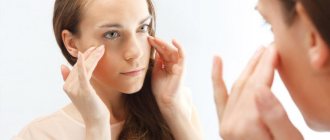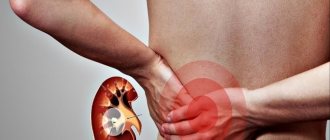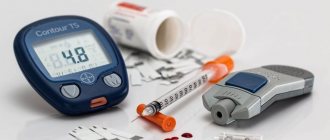Trauma is a set of injuries that occurred in a certain group of the population over a certain period of time. The highest level of injuries is observed in men aged 20-49 years, and in women - 30-59 years old, and in all age groups this figure is significantly higher in men. Among all causes of primary disability and mortality, injuries take third place, and among people of working age, injuries take first place among the causes of death. Injuries are part of the general morbidity of the population.
In our country, injuries are divided into:
-production:
- industrial,
- agricultural,
- construction,
- in transport, etc.
-non-productive:
- household,
- street,
- road transport,
- sports,
- school,
- children's, etc.
Industrial injuries.
An industrial injury is an injury sustained by a worker at work and caused by non-compliance with occupational safety requirements.
The causes of industrial injuries are divided into:
-Organizational:
- shortcomings in the organization and maintenance of the workplace,
- using incorrect work practices,
- insufficient supervision of work, compliance with safety regulations,
- allowing untrained workers to work,
- poor organization of the work process,
- absence or malfunction of personal protective equipment.
-Sanitary and hygienic:
- lack of special clothing and shoes or their defects,
- improper lighting of workplaces,
- excessively high or low air temperature in work areas, industrial dust,
- insufficient ventilation, clutter and pollution of the production area.
-Personal character:
- illness or fatigue of the worker,
- insufficient qualifications,
- unsatisfactory living conditions,
- alcohol intoxication.
Types by effect
In addition to the above types, medical classification also implies the division of injuries according to the result of exposure to a damaging factor. The following types are distinguished:
- Isolated - a specific organ or segment is damaged, the surrounding tissues and organs remain intact. Such injuries include a fracture, liver rupture, knife wound to the arm, and so on.
- Multiple - there are several injuries of the same type on the body.
- Combined - in this case, damage to the musculoskeletal system and one of the internal organs is observed.
- Combined - this is the name given to injuries resulting from exposure to several damaging factors (for example, thermal and mechanical, radiation and thermal).
Domestic injuries.
Domestic injuries include accidents that occurred outside of the victim’s work activities - in a house, apartment, yard, etc. It includes accidents that occurred outside of the victim’s work activities - in a house, apartment, yard, personal garage, etc. Domestic injuries are very high and have no tendency to decrease. The leading cause of these injuries (about a third of cases) is doing household work - cooking, cleaning and repairing premises, etc. Among the injuries, bruises, wounds, burns, etc. predominate. The hand is most often damaged. About a quarter of household injuries occur when falling in the yard, in an apartment, etc. Less commonly, injuries occur in various household incidents. Alcohol intoxication plays a significant role in their occurrence, especially on holidays and weekends. Domestic injuries in men occur 3-4 times more often than in women, and in people 18-25 years old they occur 4-5 times more often than in people 45-50 years old.
Prevention of household injuries includes:
- improvement of living conditions;
- expansion of public services to the population;
- rational organization of leisure;
- holding various cultural events;
- broad anti-alcohol propaganda;
- purposeful work to create a healthy lifestyle;
- organization of special commissions to combat domestic injuries at housing offices;
- wide public involvement.
Road traffic injuries.
Road transport injuries are injuries caused by various types of vehicles during their use (movement) in cases not related to the production activities of the victims, regardless of whether the victim was in the vehicle (driver, passenger) or outside it (pedestrian) at the time of the incident. A vehicle is any means used to transport goods, objects, people (car, motorcycle, bicycle, airplane, steamship, trolleybus, tram, railway, horse-drawn transport, etc.). Injuries in road traffic accidents are due to a large complex of reasons. Every year about 40 thousand people die on the roads and another 300 thousand are injured and often become disabled.
Experts recognize negligence in following traffic rules as the main cause of death and injury to people on the roads:
- over speed;
- driving on red;
- driving while intoxicated;
- unfastened seat belt;
- jaywalking and running a red light, etc.
The greatest number of road accidents occurs in the summer and in the first autumn months. Road traffic injuries become more frequent during the last days of the week and in the afternoon. They occur less frequently at night, but their consequences are much more severe. In cities, the main cause of traffic injuries is considered to be collisions with pedestrians, mainly by cars; collisions with motor vehicles predominate on highways. In rural areas, road accidents are more likely to involve motorcycles and trucks.
The fight against road traffic injuries and its consequences is one of the most pressing problems of our time. Our country provides for the implementation of national measures aimed at preventing road accidents; improving the state system of providing medical care to victims of road accidents and expanding scientific research in the field of road safety.
Classification by severity
The internationally generally accepted classification distinguishes three degrees of injury severity:
- Heavy. With this degree of damage, serious health problems arise, and even a threat to life. Determination of such an injury is an indication for urgent hospitalization of the victim. In case of a first degree injury, a person loses the ability to work for a period of 1 month.
- Average. In accordance with the classification of the severity of injuries, such injuries also cause loss of ability to work, but for a period of up to 1 month, and are not life-threatening.
- Easy. Injuries of the third degree of severity do not cause serious health problems or disabilities, and the treatment period does not exceed 10 days.
Street injuries.
Street injuries include injuries received by victims outside of work activities on the streets, in open public places, in fields, in forests, etc., regardless of the reasons that caused them (except for vehicles). They are associated with falling (especially during icy conditions), so their number increases significantly in the autumn-winter period. The dependence of this type of injury on the time of day is revealed. When people fall on the streets, bone fractures occur in 68-70% of cases, bruises and sprains in 20-22%, and soft tissue injuries in 4-6%. Mainly the limbs are damaged (83-85%).
The causes of street injuries are:
- poor traffic management,
- narrow streets with heavy traffic,
- insufficient lighting and alarm;
- violation of traffic rules by pedestrians;
- poor condition of street surfaces, ice, etc.
Prevention of injuries in pedestrian traffic includes:
- rational planning and improvement of streets and pavements, proper care of them (use of sand during icy conditions, filling potholes, etc.), lighting of streets and squares, fencing of buildings under construction and repair;
- rational organization and regulation of street traffic, strict control over compliance with traffic rules;
- ensuring the good technical condition of street transport, its safety (serviceability of automatic doors on buses and trams, etc.);
- supervision of children and their leisure time;
- extensive educational and explanatory work with the population (print, radio, television, cinema, lectures, reports, etc.).
One of the important measures to prevent street injuries is the fight against domestic drunkenness, since street injuries are often caused by people intoxicated.
What types of injuries are there?
The following types of damage are distinguished:
- bruises - soft tissues are damaged without compromising the integrity of the skin;
- sprains - muscles, ligaments, fascia are damaged, with rupture of individual fibers, but maintaining the anatomical integrity of the organ;
- ruptures - the same injury, but with a violation of the anatomical integrity of the muscle, ligament or fascia;
- compression - prolonged compression of a limb by an object or a person’s body, as a result of which the death of muscle cells begins;
- dislocation - a violation of the position of the joint with its exit from the joint capsule;
- fracture - violation of the integrity of the bone;
- wounds - types of open injuries received as a result of exposure to mechanical factors;
- burn, frostbite - damage caused by thermal effects.
The definition of injury is carried out by its external signs and complaints of the victim; an accurate diagnosis is made based on the results of an X-ray examination or ultrasound.
Childhood traumatism.
Childhood injuries in all countries are becoming a subject of particular concern to a wide range of people and workers in various specialties. Currently, many times more children die from injuries and accidents than from childhood infectious diseases. In the occurrence of injuries, the anatomical, physiological and psychological characteristics of children, their physical and mental development, lack of everyday skills, increased curiosity, etc. are of significant importance. When analyzing childhood and school injuries, it is taken into account that each age group has its own characteristics. It is necessary to teach children proper behavior at home, on the street, in public places, and when playing sports.
The following types of childhood injuries : 1) domestic; 2) street (transport-related, non-transport); 3) school; 4) sports; 5) other. Children's household injuries include injuries that occur at home, in the yard, and in preschool institutions. The most severe of these are burns (mainly in infants) and fractures. Quite often, in children from 1 to 3 years old, injuries to the ligamentous apparatus of the elbow joint occur as a result of a sharp pull on the child’s arm. Among the causes are bruises (30-35%), injuries from a fall (22-20%), damage from sharp objects (18-20%), thermal effects (15-17%). Injuries are mainly attributed to poor supervision of children.
Among the variety of causes of children's domestic injuries, the following can be distinguished:
- improper care and insufficient supervision of the child;
- lack of order in the maintenance of the household (unclosed exits to roofs, unprotected staircase railings, open hatches in basements, wells, unfenced trenches during excavation work, lack of fences for buildings under renovation, careless storage of materials at construction sites, etc.);
- lack of special furniture and fences in apartments, playgrounds, and non-flammable clothing;
- defects in education at home and at school, lack of skills for correct behavior in public places, etc.
School injuries include accidents among students of daytime comprehensive schools of all types (including music, sports, vocational schools) that occurred while they were at school (in class, including physical education class, during recess, in educational workshops, in the school area ). Due to the large crowding, hourly movement from class to class, short breaks, when children's energy accumulated during the lesson splashes out within a few minutes, injuries are inevitable. Every fifth injury to schoolchildren occurs at school, and 4/5 of them occur during recess. Today the whole world is concerned about the prevention of childhood injuries.
first aid
Most often, domestic injuries occur for reasons beyond our control. This is largely due to:
Carelessness, negligence, haste, lack of care, inept handling of hot liquids, fire, chemicals, electrical and gas appliances, etc.
In children this is accompanied by: lack of skills, knowledge, abilities, forethought, hyperactivity, curiosity, mischief and hooliganism, etc.
More than 70% of household injuries and damage of varying severity occur as a result of falls:
On slippery uneven floors in the kitchen and hallways, from stools, on an unlit staircase, chipped steps, in bad weather in the yard.
In old age, people often fall due to dizziness, as a result of cerebrovascular accident, cardiac weakness, or overestimation of their physical capabilities.
Head injuries are especially dangerous . In case of nausea, vomiting, loss of consciousness (even short-term), dizziness, the victim should be sent to the hospital or a doctor should be called to his home.
Injuries are a very common type of household injury. They can be caused by a sharp object (knife, fork, razor, scissors) and other household items. If the wound is superficial, then heavy bleeding usually does not occur. With deep wounds, bleeding is usually severe and very difficult to stop; in this case, you must urgently seek medical help.
Burns can be caused by careless, inept handling of fire, hot liquids, hot objects, gas and electrical appliances, stoves and other circumstances, mischief with matches, careless handling of pyrotechnics.
For burns of varying degrees, it is necessary, first of all, to immediately provide first aid, which includes:
Saving the life of the victim (remove the victim from the source of the burn injury, fire, extinguish burning clothing, perform artificial respiration if necessary, closed heart massage, etc.).
Termination of the action of the thermal agent and cooling of the damaged area. Regardless of the nature of the injury, the substance that caused the burn, it is necessary to wash the wound with plenty of water, apply a sterile dry bandage or a bandage moistened with an antiseptic solution (furacilin, furagin, etc.). Even if the injury is minor, it is necessary to seek help and advice from a specialized burn department or emergency room at your place of residence. It should be remembered that limited but deep burns in the area of the hand, face, and joints can lead to serious complications, such as:
-disability;
-disfigurement;
- long-term loss of function and ability to work.
When providing first aid for burns, it is strictly contraindicated to apply fat-based ointments, various vegetable oils (sea buckthorn, sunflower, etc.), baking soda, urine and other substances to the wound surface.
Reducing pain (cooling, rest with immobilization of the injured limb, analgesics).
Sports injuries.
Sports injuries are accidents that occur during sports (scheduled, group or individual, at a stadium, in a sports section, on a sports ground) under the supervision of a teacher or coach. Accidents involving schoolchildren during physical education classes according to the school curriculum are not included in this group of injuries. Sports injuries account for 2-3% of all injuries. Most often they occur during boxing, football, hockey, wrestling, motorsports, and gymnastics. Every sport has common injuries. Thus, football and hockey players are more likely to experience damage to the menisci of the knee joint; in skiers and figure skaters - helical fractures of the diaphysis of the tibia, ankles and sprains of the ligamentous apparatus of the ankle joint. The most common injuries are soft tissue, with a predominance of abrasions and abrasions; bone fractures do not exceed 3% of the total number of injuries, dislocations account for 3-5%. By location, the largest number of injuries occur on the extremities, followed by injuries to the head and torso. An objective indicator of the severity of the injury is the duration and persistence of loss of athletic performance.
The main causes of sports injuries:
- violations in the organization of training sessions and competitions;
- unsatisfactory condition of training places and unfavorable conditions for conducting them;
- unsatisfactory condition of sports equipment and equipment, clothing, shoes;
- insufficient medical supervision;
- poor physical fitness of the athlete (long breaks in classes, lack of systematic training, overwork, etc.);
- violations of discipline by athletes during training and competitions.
Basic preventive measures:
- control over the organization and methodology of educational training sessions and competitions (especially for beginner athletes). The so-called insurance and assistance in classes are very important;
- technical and sanitary-hygienic supervision of the condition of places of training and competitions, sports equipment, clothing, shoes and equipment of the athlete. Use of special protective devices (shields, elbow pads, knee pads, wrist pads, etc.);
- protection from adverse weather conditions (heat and sunstroke, frostbite, etc.);
- medical control over those involved in sports. Primary and secondary medical examinations before participation in competitions, before resuming activities after a break;
- instilling discipline and camaraderie among athletes, as well as suppressing any manifestations of indiscipline;
- mandatory analysis of sports injuries together with the instructor, coaches, and athletes.










